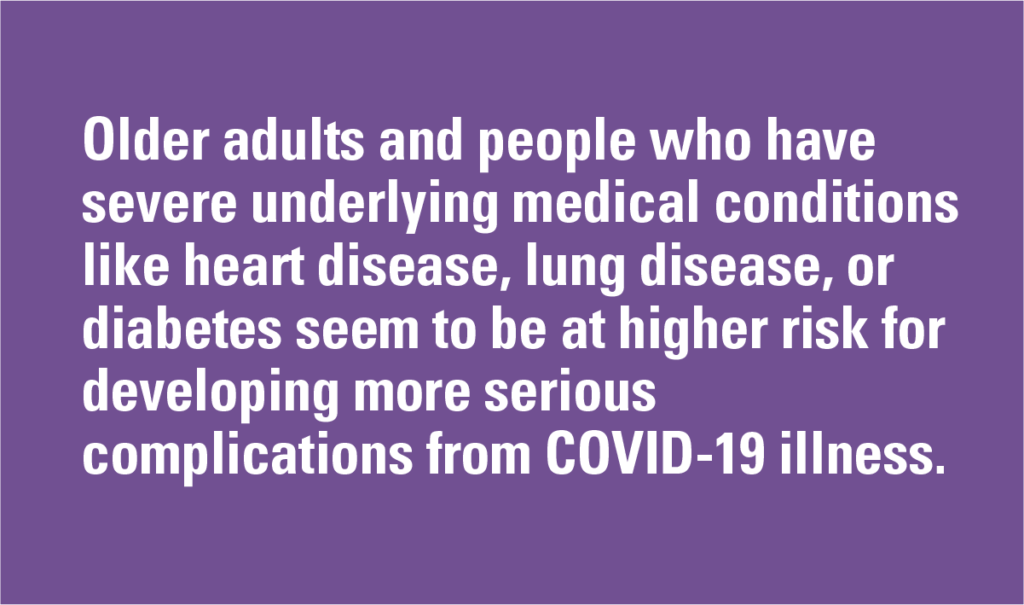
Coronavirus is a family of viruses that can cause respiratory illnesses such as the common cold, severe acute respiratory syndrome (SARS) and Middle East respiratory syndrome (MERS).
In 2019, a new coronavirus was identified as the cause of a disease outbreak that originated in China. The virus is now known as the severe acute respiratory syndrome coronavirus 2 (SARS-CoV-2). The disease it causes is called coronavirus disease 2019 (COVID-19).
The U.S. Centers for Disease Control and Prevention (CDC) and the World Health Organization are monitoring the pandemic and posting updates on their websites.
Both groups have also issued the following recommendations for preventing and treating the illness.
Watch for Symptoms
Reported illnesses have ranged from mild symptoms to severe illness and death for confirmed COVID-19 cases.
These symptoms may appear 2-14 days after exposure.
- Fever
- Cough
- Shortness of breath
Older adults and people who have severe underlying medical conditions like heart disease, lung disease or diabetes seem to be at higher risk for developing more serious complications from COVID-19 illness.

When to Seek Medical Attention
If you develop emergency warning signs for COVID-19, get medical attention immediately. Emergency warning signs include*:
- Trouble breathing
- Persistent pain or pressure in the chest
- New confusion or inability to arouse
- Bluish lips or face
*This list is not all inclusive. Please consult your medical provider for any other symptoms that are severe or concerning.
Source: Centers for Disease Control and Prevention
